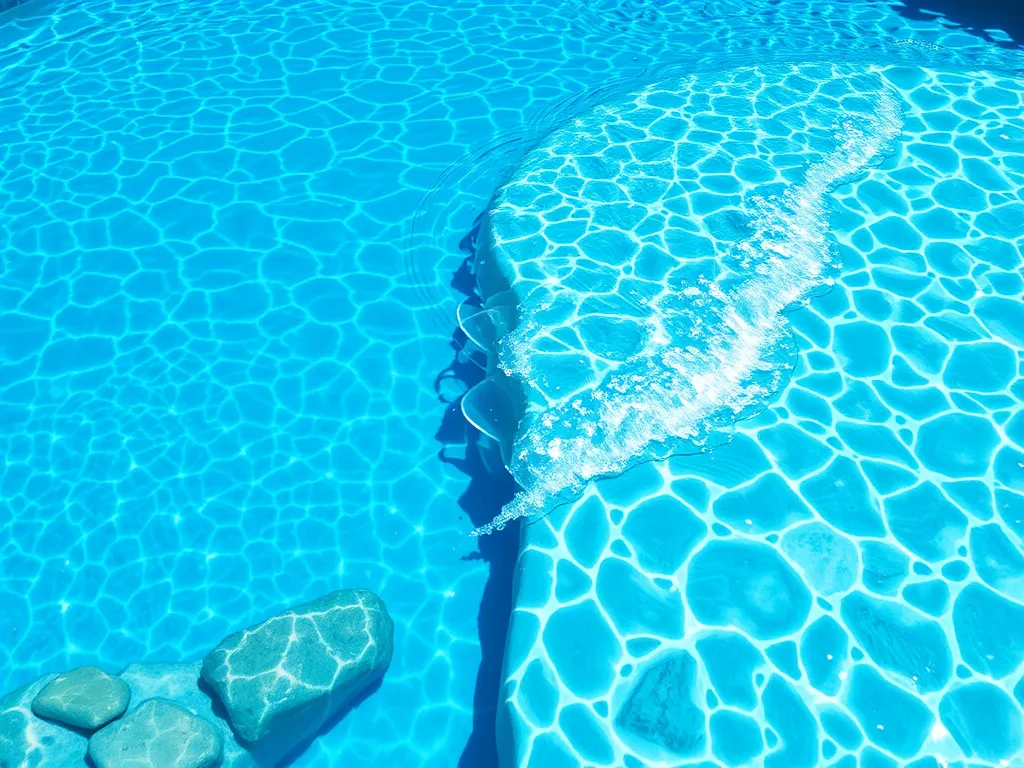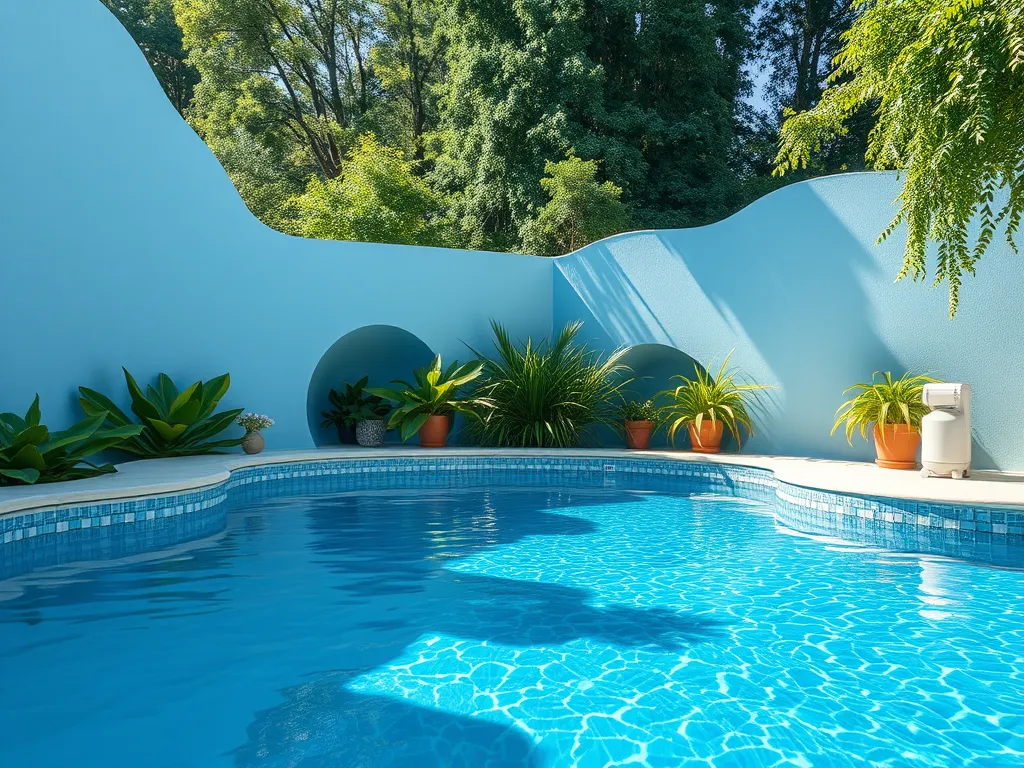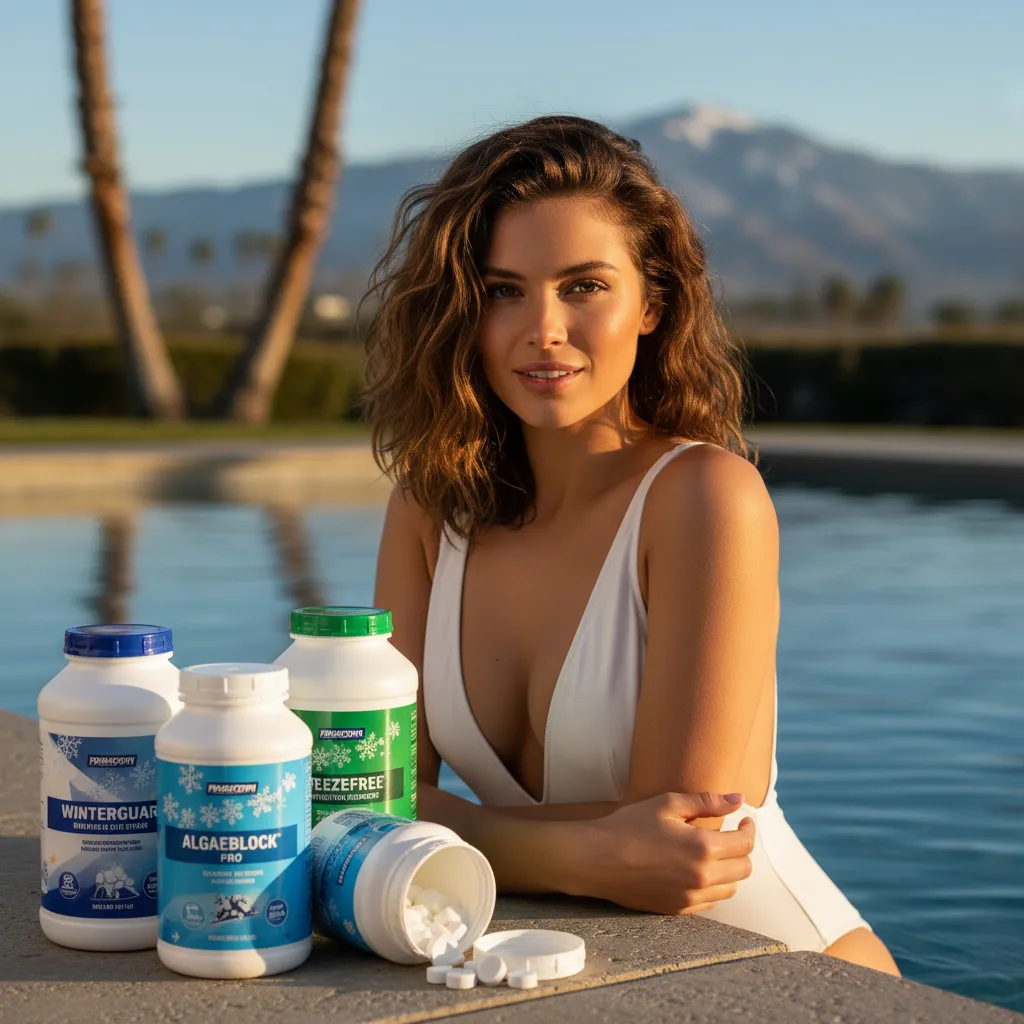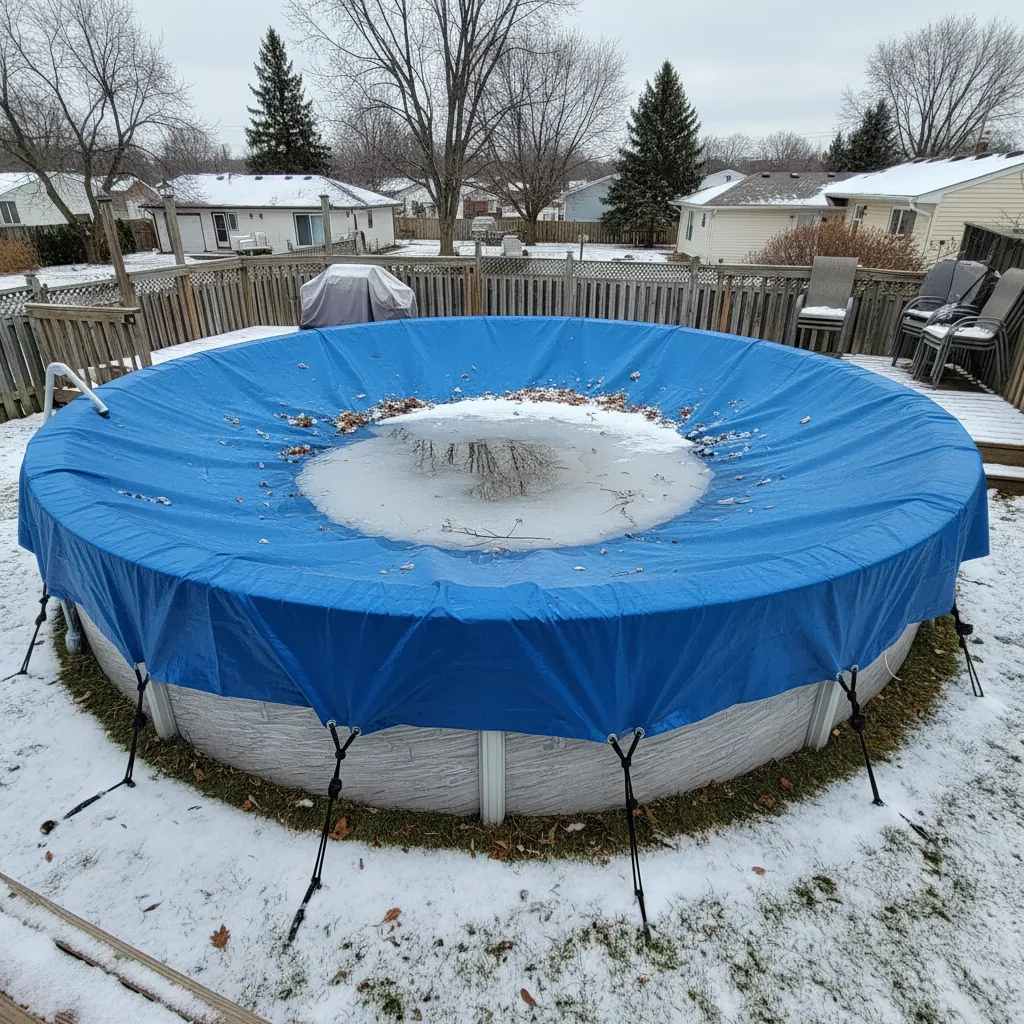TDS Pool Calculator: Measure and Manage Total Dissolved Solids
Published on: April 26, 2025 | Last Updated: April 13, 2025
Written By: Rachael Weatherbottom
A TDS pool calculator helps you monitor dissolved solids in your pool water. High TDS levels reduce water clarity and sanitizer effectiveness. This tool calculates how much water to replace to maintain safe TDS levels. Regular use prevents cloudy water and equipment damage.
Pool TDS Calculator
- Test current TDS with digital meter
- Enter values in all fields
- Click calculate
- Drain/replace suggested water amount
Factors Influencing TDS Levels in Swimming Pools
Total Dissolved Solids (TDS) measure all organic and inorganic substances dissolved in pool water. These include calcium, magnesium, sodium chloride, cyanuric acid, and organic matter. Levels exceeding 1,500 ppm often trigger water imbalance, scaling, or cloudy water. Monitoring TDS requires understanding key contributors. Keeping TDS levels in check is essential for maintaining clear and safe pool water. Regular testing can help ensure the water remains balanced and enjoyable for swimmers.
Crucial Winterizing Products
"The all-in-one solution for a guaranteed clear spring opening."
All-in-One Closing Chemical Kit
Winter demand is high - check stock
"The 'set & forget' option. This is the easiest winterizing I've ever done."
Simple 3-in-1 Winterizing Balls
Winter demand is high - check stock
"Invest once to protect your liner and prevent a swamp in the spring."
Heavy-Duty Winter Pool Cover
Winter demand is high - check stock
Source Water Composition
Municipal or well water contains inherent minerals. Hard water areas may start with 400-600 ppm calcium carbonate. Saltwater pools begin with 2,500-3,500 ppm sodium chloride. Test source water before filling the pool. A basic TDS meter ($15-$50) provides instant readings. This is important because the right balance of minerals helps maintain pool health. To ensure your pool is safe and comfortable, regularly test the calcium hardness levels.
Chemical Additives and Treatments
Each chemical alters TDS:
- Chlorine (sodium hypochlorite): Adds 1.7 ppm TDS per 1 ppm chlorine
- Stabilizer (cyanuric acid): Contributes 1,200 ppm TDS per 10 lb dose in 20,000-gallon pools
- Algaecides: Quaternary ammonium compounds add 50-200 ppm
Saltwater chlorine generators elevate TDS by 3,000-4,500 ppm through sodium chloride electrolysis.
Environmental Contaminants
Windblown debris, swimmer waste, and rainfall introduce dissolved solids. A single swimmer adds 0.5-1.0 ppm urea, ammonia, and organic compounds. Dust storms can deposit 5-15 ppm silicate minerals weekly in outdoor pools.
Evaporation and Water Replacement
As water evaporates, dissolved solids concentrate. Topping off with fresh water merely dilutes - not removes - existing TDS. Partial draining becomes necessary when TDS exceeds manufacturer limits (typically 1,500 ppm above initial levels).
Measuring and Interpreting TDS Readings
Accurate TDS assessment requires digital meters or lab testing. Compare readings against these benchmarks:
| Pool Type | Ideal TDS Range | Action Threshold |
|---|---|---|
| Freshwater | 500-1,500 ppm | >2,000 ppm |
| Saltwater | 3,000-6,000 ppm | >7,000 ppm |
| Indoor | 800-1,200 ppm | >1,800 ppm |
High TDS correlates with:
- Langelier Saturation Index (LSI) > +0.5: Scaling risk
- LSI < -0.5: Corrosive water
- Chlorine demand spikes (up to 2x normal usage)
Also See: Pump Run Time Calculator: Optimize Your Pump’s Time

Managing Elevated TDS Levels
Partial Drain and Refill
Replacing 50% water reduces TDS by half. Costs vary by location:
- Municipal water: $4-$10 per 1,000 gallons
- Well water: $0.50-$2 per 1,000 gallons (electricity costs)
- Hauled water: $120-$250 per truckload (6,000 gallons)
Reverse Osmosis (RO) Filtration
Mobile RO systems filter 2,000-5,000 gallons daily, removing 85-95% TDS. Typical costs:
- $300-$600 for 10,000-gallon pools
- $700-$1,200 for 20,000-gallon pools
RO preserves water and minimizes chemical waste but requires 8-12-hour processing times.
Chemical Sequestering Agents
Polyphosphate-based products (e.g., Jack's Magic, ScaleTec) bind calcium and metals. Dosage: 1 qt per 10,000 gallons weekly ($15-$30 per month). Effective for TDS 1,800-2,500 ppm but temporary. Maintaining lower phosphate levels in your pool can help reduce algae growth. By using the right products, you can keep phosphate levels in check and ensure a cleaner, clearer pool.
TDS and Equipment Longevity
Excessive dissolved solids accelerate wear:
- Heaters: Scaling reduces efficiency by 15-30%, shortening lifespan from 10 to 5-7 years
- Pumps: Seal failure rates increase 40% at TDS >2,500 ppm
- Filters: DE grids require 20% more cleanings; cartridge pleat spacing clogs faster
Regional TDS Considerations
Geology and climate dramatically affect baseline levels:
| Region | Average Source Water TDS | Common Issues |
|---|---|---|
| Southwest US | 600-1,200 ppm | Calcite scaling |
| Midwest US | 300-500 ppm | Iron staining |
| Coastal Areas | 200-400 ppm | Saltwater intrusion |
Specialized TDS Scenarios
Saltwater Pool Dynamics
Salt systems require 2,700-3,400 ppm NaCl, contributing 3,800-4,700 ppm TDS. Monitor chloride levels separately - high TDS from other sources reduces chlorine production efficiency. Proper salt levels are crucial for maintaining water quality. A salt chlorine generator can help automate the process of generating chlorine, providing a more consistent and reliable sanitation method for your pool.
Indoor Vs Outdoor Pools
Indoor pools lack rainfall dilution. Evaporative humidity systems add 10-25 ppm TDS monthly from airborne particulates. Recommended quarterly TDS checks versus monthly for outdoor pools. When it rains, outdoor pools must close to keep swimmers safe. This policy helps prevent accidents and ensures water quality is maintained.
FAQs - TDS Management in Swimming Pools
Why Does High TDS Cause Cloudy Water?
Surpassing 2,000 ppm reduces chemical solubility. Calcium carbonate precipitates as micro-crystals (0.5-2 microns), scattering light. Flocculants may fail without partial drainage. Maintaining proper phosphate levels in a pool is also crucial. Baking soda can help manage these levels effectively.
Can You Lower TDS Without Draining?
Reverse osmosis is the only non-dilution method. Sequestering agents mask symptoms but don't reduce actual TDS. Enzyme-based clarifiers break down organics but leave inorganic solids. To manage salt levels, it's important to consider methods that dilute water. Dilute water can help decrease the concentration of salt in a solution, making it more manageable.
How Often Should TDS Be Tested?
Monthly testing suffices for most pools. Test weekly if:
- Using calcium hypochlorite shock
- Experiencing frequent evaporation (>2" weekly)
- Located downwind of construction/agricultural sites
Does Pool Surface Material Affect TDS Limits?
Yes. Plaster finishes tolerate up to 2,500 ppm. Vinyl liners and fiberglass require keeping TDS under 2,000 ppm to prevent osmotic blistering.
What's the Relationship Between TDS and Salt PPM?
Salt contributes to TDS but isn't equivalent. Sodium chloride accounts for ~65% of TDS in salt pools. Always test both parameters - high non-salt TDS indicates contamination. Keeping your salt level balanced is also essential for effective pool operation. Regularly checking the salt level in your pool helps maintain water quality and prevents damage to the pool equipment.

Advanced TDS Reduction Techniques
Ion Exchange Systems
Commercial pools use resin tanks to swap calcium/magnesium for sodium ions. Reduces hardness-related TDS by 85-90%. Initial setup: $1,200-$2,500. Regeneration requires NaCl brine flushes every 10,000-20,000 gallons. Maintaining balanced water chemistry is essential for pool health. Sodium bisulfate can help manage pH levels effectively in these pools.
Electrodialysis Reversal (EDR)
Membrane technology removes ions via electrical charge. Effective for large commercial pools (50,000+ gallons). Removes 50-70% TDS at $0.30-$0.50 per gallon processed.
Cost Comparison: Drain Vs RO Vs Sequestering
| Method | 20k Gallon Pool Cost | TDS Reduction | Duration |
|---|---|---|---|
| 50% Drain/Refill | $80-$160 | 50% | 6-8 hours |
| RO Filtration | $700-$1,200 | 85% | 12-24 hours |
| Sequestering (Annual) | $180-$360 | 0% | N/A |
Proactive TDS Maintenance Strategies
- Install auto-fillers with overflow prevention to minimize evaporation concentration
- Use liquid chlorine instead of cal-hypo to reduce calcium addition
- Implement cartridge filter pre-coating with cellulose fiber to trap fine particulates
- Apply quarterly NSF/ANSI 50-certified enzyme treatments
For precise TDS tracking and customized management plans, visit My Pool Calculator. Our tools integrate local water quality data with real-time chemical dosing recommendations.
TDS and Regulatory Compliance
Public pools must adhere to APSP/ANSI standards:
- ANSI/APSP-11: Max TDS 2,500 ppm above source water
- CDC Model Aquatic Health Code: Monthly TDS testing required
- California Title 22: RO discharge must meet TDS <1,000 ppm
Seasonal TDS Fluctuations
Outdoor pools experience 15-35% TDS increases during summer. Winterizing with enzymes and partial drains prevents spring openings with critically high levels. Cover pools during dust storms or pollen seasons.
Diagnosing Tds-related Issues
Use this troubleshooting matrix:
| Symptom | TDS Range | Likely Culprits |
|---|---|---|
| Surface etching | 1,200-1,800 ppm | Low calcium + high TDS |
| Cloudy returns | >2,200 ppm | Carbonate precipitation |
| Chlorine inefficacy | >1,800 ppm | Organic loading |
Always cross-reference TDS with LSI, phosphate levels (goal <500 ppb), and oxidation reduction potential (ORP).
Also See: Pool Build Cost Calculator for Easy Estimates
Useful References for You:
- PoolPro Magazine (Industry News & Technical Articles)
- Langelier Calculator | AquaChek Pool & Spa Testing
- No Access Water Chemistry Calculator
- Pool Saturation Index Calculator | LSI Calculator | Pentair
- TDS Calculator
A pool care geek who’s been testing water chemistry since she was tall enough to reach the skimmer.
Pool Calculators, Pool Volume





